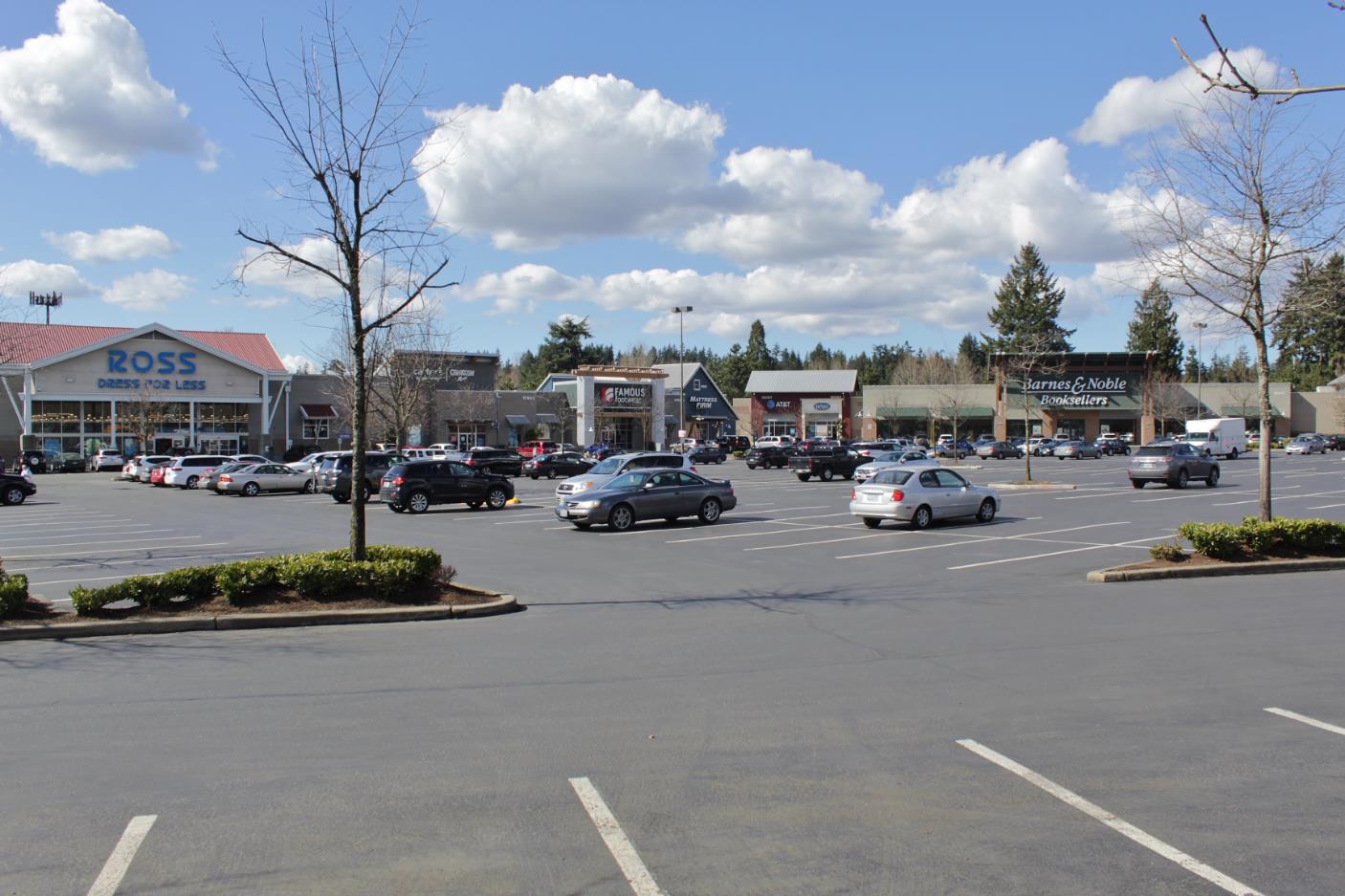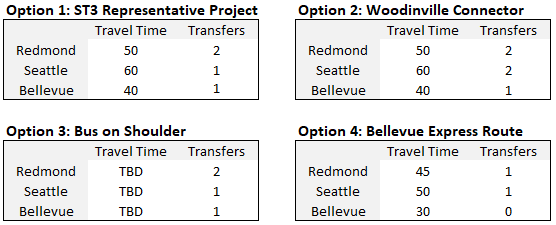Reevaluating Woodinville BRT
 Woodinville (Image: SounderBruce)
Woodinville (Image: SounderBruce)
[Update: corrected an error in the matrix of travel times at the end of the post, where the matrix previously miscounted the transfers in the representative project. Also updated the associated text in the paragraph just above].
Work has begun on SR 522 BRT, with the first BAT lanes in Bothell coming online in late 2020, and Sound Transit's Stride BRT service opening in 2024. Although phase 1 design recently concluded and the project is now entering the Conceptual Engineering and Environmental process, planners continue to evaluate how to serve the low-ridership Woodinville segment.
The BRT extends from the Shoreline Link rail station along NE 145th where Sound Transit will add bus queue bypasses and signal priority for transit at key intersections. On SR 522, the patchwork of existing BAT (business access & transit) lanes will be filled in to create an uninterrupted lane for transit from 145th to Bothell. In Bothell, the BRT is likely to operate on downtown streets, serving UW Bothell and connecting to I-405 BRT at NE 195th St.
Beyond that, there is a 3.5-mile segment to the Woodinville Park & Ride where the planned service is more basic. The ST3 plan does not fund any capital improvements east of I-405 and the buses operate in general purpose freeway lanes on I-405 and SR 522. The 10-minute headways west of I-405 drop to every 20 minutes into Woodinville.
Expectations for ridership on the Woodinville segment are low. Sound Transit models suggest 8,800 daily boardings on the BRT in 2042, of which just 100 are at the Woodinville stop.
 SR 522 BRT, with exclusive ROW in blue and purple. Woodinville segment in green. (image: Sound Transit, click to enlarge)
SR 522 BRT, with exclusive ROW in blue and purple. Woodinville segment in green. (image: Sound Transit, click to enlarge)
Like most residential communities on the Eastside, transit commuters are overwhelmingly going to Seattle. But overall travel patterns are more diverse. The greatest number of Woodinville commuters are to Redmond, and many drive to Bellevue. It's simply that driving is easier than using transit for most Eastside workplaces, but transit is more competitive to Seattle.
This naturally prompts some rethinking about how to fulfill the ballot measure commitment - that Woodinville be connected to the regional high-capacity network - without unproductively expending too many scarce service hours. At a City Council meeting on May 7, Sound Transit explained four options they are exploring. (video here, presentation here).
Representative Project: This is simply the above alignment described in the 2016 ST3 plan. Travel times from Woodinville are about 60 minutes to Seattle, 40 to Bellevue, 50 minutes to Redmond.
Woodinville Connector: This splits the SR 522 BRT line. The BRT would operate only from I-405 to Shoreline. A separate bus would serve the Woodinville segment. Splitting the route would improve reliability on each part, while also allowing a more 'right-sized' vehicle to operate in Woodinville. For riders to Seattle, there is an added transfer at NE 195th. For other Eastside destinations, riders need to transfer anyway to get to I-405 BRT, and the service reliability on a connector may make this more appealing. to other Eastside destinations would not be adversely affected. Either the representative project or Woodinville Connector require one transfer to Bellevue or two to go to Redmond.
Bus on Shoulder: This appears less probable because it requires capital investments where no capital funding was identified in the plan. Low-investment improvements, if funded, might speed bus operations on the Woodinville segment, most likely along SR 522. Shoulder-running would allow some savings in service hours and mitigate the reliability challenges of running 'BRT' service over miles of general-purpose lanes.
Bellevue Express Route: This would replace the BRT to Woodinville with an express service to Bellevue (and a one-transfer ride to Redmond via the NE 85th station in Kirkland). The available service hours probably wouldn't stretch to very much off-peak coverage. But this option does provide a direct and speedy connection to other Eastside destinations. Less obviously, it's even faster to Seattle because it connects with East Link and other Seattle express buses from the Eastside. It has not been decided whether this option would connect to Bothell (which requires some backtracking north on I-405 from SR 522), or proceed directly to southbound I-405 to Bellevue.
This matrix sketches some of the implications for riders. Options 2 and 3 both add transfers for riders.. Option 2 adds a transfer for riders to Seattle. Both options 2 & 3 have some upside in service reliability that isn't captured in scheduled travel time. The Bellevue Express route has the fastest commute times and has the same or fewer transfers to any destination, but will likely be limited outside peak hours.
Discussions will continue at the staff level and at the Elected Leaders Group. A decision is targeted by late 2019.
